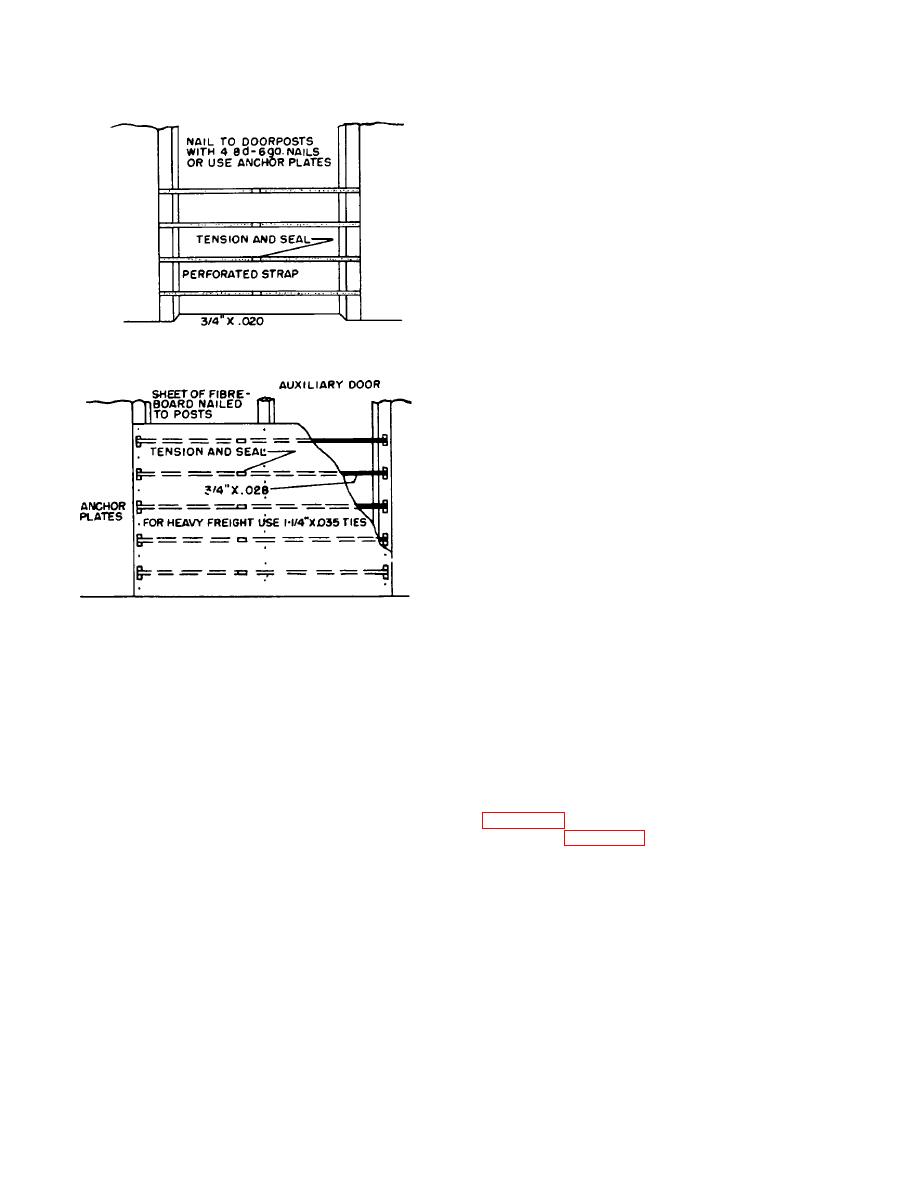 |
|||
|
|
|||
|
|
|||
| ||||||||||
|
|
 TM 38-400/NAVSUP PUB 572/AFMAN 23-210 MCO 4450.14/DLAM 4145.12
slack begins to develop within the load, repeated
impacts may cause a void large enough to allow the
containers on the top layer to fall between the load and
the ends of the car. To protect against damage in rigid
braced loads, containers will be loaded tightly with the
strongest parts arranged to provide support lengthwise
of the car. All loads (excluding floating loads) should be
loaded or braced to minimize any possibility of
movement.
3-70. Floating Loads . (Not permitted for shipments of
explosives, ammunition, and other hazardous materials,
nor permitted in any boxcar equipped with under-car or
end-of-car shock mitigating cushion devices.)
a. Types of floating loads. There are two types of
floating loads: the full floating load and the controlled
floating load commonly called the "Snubbing Method."
Many items present special loading and bracing
problems because of the weight, size, shape, or fragility;
such items of this type brought about the development
of the floating load. For further information concerning
loading to withstand the various types of pressure, see
AAR pamphlets 14 and 21.
b. Controlled floating load.
(1) Description. When using the controlled
floating load, blocking is not applied against the front or
rear of the unit or the units to be shipped. Generally,
the units that are to be shipped by this method are items
Figure 3-15. Use of steel straps for double door
that are skidded (i.e., engines, machine tools,
auto boxcar.
generators, or large motors); snubbing or braking
devices are applied against the side of the skids. Under
(4) Prevention of lateral movement.
To
lengthwise impact, the shift of the skidded item is
provide adequate protection against lateral movement
controlled and the item is held in contact with the floor of
at all times, the load must be tight crosswise. Proper
the car. Thus, the greater part of the shock forces are
blocking and bracing must be applied to prevent the
dissipated through the friction and riding of the skid
load from shifting or moving out of alignment.
structures. The item is actually isolated from lengthwise
shock forces. There are two commonly used snubbing
e. Lengthwise pressures. Most damage in rigid
devices-antiskid plates and lag screws. The antiskid
braced loads is prevented by loading containers tightly
plate and method of application are shown in A and B,
to prevent development of slack within the load. Once
shown in C, figure 3-16.
3-48
|
|
Privacy Statement - Press Release - Copyright Information. - Contact Us |